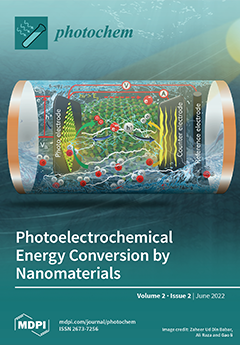This paper describes the photophysical properties of a series of seven selected examples of 5-(alkyl/aryl/heteroaryl)-2-methyl-7-(trifluoromethyl)pyrazolo[1,5-
a]pyrimidines (
3), which contain alkyl, aryl, and heteroaryl substituents attached to the scaffolds of
3. Given the electron-donor groups and -withdrawing groups, the optical
[...] Read more.
This paper describes the photophysical properties of a series of seven selected examples of 5-(alkyl/aryl/heteroaryl)-2-methyl-7-(trifluoromethyl)pyrazolo[1,5-
a]pyrimidines (
3), which contain alkyl, aryl, and heteroaryl substituents attached to the scaffolds of
3. Given the electron-donor groups and -withdrawing groups, the optical absorption and emission in the solid state and solution showed interesting results. Absorption UV–Vis and fluorescence properties in several solvents of a pyrazolo[1,5-
a]pyrimidines series were investigated, and all derivatives were absorbed in the ultraviolet region despite presenting higher quantum emission fluorescence yields in solution and moderate emission in the solid state. Moreover, the solid-state thermal stability of compounds
3a–
g was assessed using thermogravimetric analysis. The thermal decomposition profile showed a single step with almost 100% mass loss for all compounds
3. Additionally, the values of T
0.05 are considerably low (72–187 °C), especially for compound
3a (72 °C), indicating low thermal stability for this series of pyrazolo[1,5-
a]pyrimidines.
Full article





